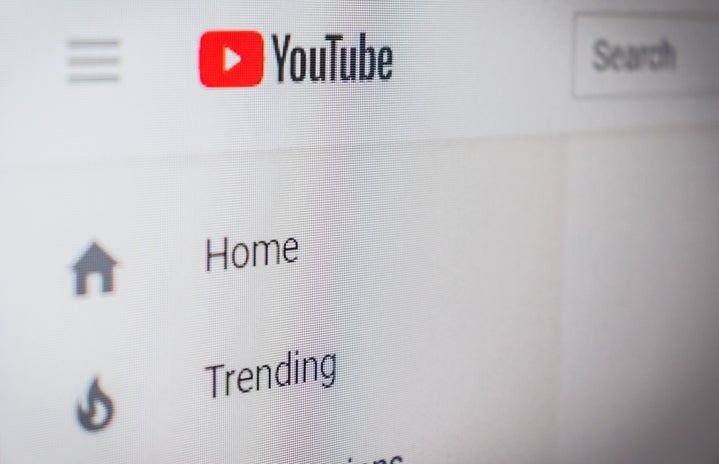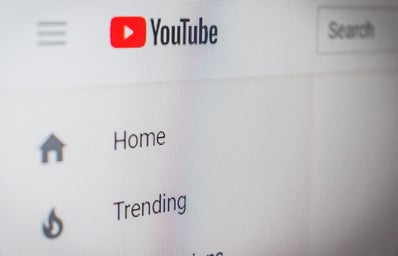I am a sucker for the YouTube rabbit hole. Discovery UK’s “How It’s Made” videos, clips from “Running Wild with Bear Grylls” and the new series by Mike’s Mic, “An appropriately unhinged recap of Pretty Little Liars” are some of my recent favorites. But nothing has a hold over me quite like TED Talks. With over 3,900 of them to watch, these less-than-18-minute videos are a classic nighttime binge.
Even if you’ve never ventured down the TED YouTube spiral, their videos have been a pop-culture feature since they were first posted online in 2006. From classrooms to HR trainings, TED Talks have become the “modern gold standard for presentations.”
So, what has made TED a self described “viral video phenomenon”?
Carmine Gallo’s 2014 Forbes article highlights the three “unbreakable laws” of TED’s successful presentation style. The first of the three principles is emotion. The person on stage, standing beside the signature neon-red “TED” sign, is not only an expert in their subject, but a storyteller. They capture the attention of their audience, both in-person and online, with passionate delivery, humor, and “commanding body language.” They pull in people who would otherwise never be interested in the topic and leave them feeling like an expert.
The second law of TED Talks is novelty. In his TED Talk on “Why videos go viral,” YouTube’s Head of Culture and Trends, Kevin Allocca, explains that “in a world where two days of video get uploaded every minute, only that which is truly unique and unexpected can stand out.” Gallo’s article quotes Dr. A. K. Pradeep who explains that brains are trained to look for and retain “‘something that stands out, something that looks delicious.’” TED Talks are new, unique, and unexpected: that “something delicious” to satisfy our brains.
The third component that makes TED Talks so popular is their memorability. Alongside their oral presentations, speakers often use slideshows of pictures, which are scientifically easier to remember. TED presenters also hold our attention by focusing on one topic. Given their short format, videos are limited to one theme, keeping them perfectly short and sweet. The famous rule of three is also commonplace in TED videos. When packaged in threes, information is, as Dr. Ken Broda-Bahm says, “sticky”.
Gallos wrote his article on the laws of TED Talks almost eight years ago, but they all ring true today. Emotion, novelty, and memorability definitely trap me in the “Watch Next” cycle of TED’s YouTube channel, and I’m sure they’ll hook you too. So, here are some recommendations to start (or revisit) some binge-worthy TED Talks.
…
1. Tim Urban | Inside the mind of a master procrastinator
Given my looming deadlines, missing assignments, and unread emails it should be no surprise that this TED Talk is first on the list—and yes, it was the inspiration for this article. But my own procrastination tendencies aside, Tim Urban’s talk is the perfect representation of Gallos’s three laws.
The storytelling reflects his relatable, witty humor. The graphics allow him to balance a stress inducing topic with a lighthearted tone. And the new outlook he provides to think about accomplishing a task changed my approach to work.
Though I cannot summarize the concept better than he explains it in the presentation, Urban describes the mind of a procrastinator through three characters: the rational decision-maker, the instant gratification monkey, and the panic monster.
When faced with a task alone, the rational decision-maker would be capable of leaving ample time to complete it. The instant gratification monkey, however, serves as a distraction. Spending designated work time in what Urban calls “the Dark Playground,” the monkey enjoys more leisurely activities. Only when the panic monster appears and scares the monkey with a fast-approaching deadline does the monkey leave. This may fly in school or at work, if you, like me, perform well under pressure. But what happens when there is no deadline to release that panic monster? And if that question brings you the same dread that it does me, this TED Talk may be a must-watch for you.
2. Chimimanda Ngozi Adichie | We should all be feminists
I’m tempted to write all about my love for Chimimanda Ngozi Adichie and her writing, but I’ll save that for another article. Instead, I’ll speak to how, in 2022, her talk on feminism should be required reading.
This talk breaks the traditional less-than-18-minute format, but it is worth every minute. Though her commentary is not the end all be all of feminist theory, and I would like to think that much of what Adichie discusses is common knowledge, it is nice to be reminded of these basics. Her storytelling perfectly encapsulates moments that almost every woman can relate to. Instances where double standards, unreasonable expectations, and intersectional obstacles rear their ugly head in everyday life. Adichie turns a complex argument that I have struggled so many times to articulate into something that seems blatantly obvious: feminism is for everyone, not just women.
Adichie’s TED Talk reminds me that my feminism is not so much about my “womanness” as it is my deconstruction of the patriarchy. It reminds me to label the otherwise unaddressed moments of mistreatment as sexist. It was what made a 5th grade Isa identify with the word feminist and associate with it proudly. And if that’s not enough to convince you to watch this TED Talk, maybe the fact that it was quoted in Beyoncé’s “***Flawless” will.
3. Lera Boroditsky | How language shapes the way we think
When a professor pulls down the projector and shuts off the lights to show a video in class, I know it’s time for a brain break. I usually can’t help but zone out. Watching Lera Boroditsky’s TED Talk in a class on intercultural communication, was different. I was immediately hooked.
As a language scientist, Boroditsky is an unsurprisingly articulate speaker. In only 14 minutes Boroditsky explains how language shapes our perception of direction, gender, color, blame, and even numbers. Maybe it is the International Studies major in me, but this presentation scratched an itch in my brain that I didn’t know was there.
I knew that languages were diverse and influenced culture, but I was unaware of how deep that influence was. The thought that some languages had no word for right and left did not even cross my mind. That some languages have no words for numbers or the concept of counting was shocking. The influence of sentence construction on how we place blame and impose punishment was, to use Gallo’s word, novel.
But beyond providing me with new facts to whip out in conversation, Boroditsky helps challenge my Western/American-centric views. Her talk emphasizes the importance of context and culture in understanding how people operate. It makes me question my assumptions of how people “should” think or behave. It highlights how many cultures and methods of thinking I have yet to learn about. It reminds me to appreciate how diverse and rich the world’s cultures are. And ultimately, Boroditsky’s TED Talk taught me that if language shapes how we think, and language is constructed, we have the power to change how we think.
4. Bryan Stevenson | We need to talk about an injustice
I was not the kid who changed their answer to “What do you want to be when you grow up?” every other year. It was always “lawyer.” Though my knowledge of the injustices that plague our legal system was surface level at the time, I did know that nothing in this country seemed fair. As I started taking classes and joining programs regarding the justice system, the question of the death penalty was always tricky. I knew I was generally against it, but what about the worst of the worst? Were there some scenarios where it was justified? Bryan Stevenson’s TED Talk was the answer.
In this presentation, Stevenson outlines a hypothetical: what if Germany, given the history of the Holocaust, was disproportionately giving Jews the death sentence? The international community would be up in arms. People would be outraged. Why? Because the history of genocide makes us want to avoid anything similar. But this is not far off from what really happens in the United States. America, which was founded on and continues to operate because of Black enslavement and oppression, disproportionately sentences Black people to death. In this way, Bryan Stevenson transformed the controversial debate in my mind: it is no longer a question of whether the death penalty is right or wrong, but whether the United States deserves to kill.
A question that I had struggled to definitively answer became clear. The morality debate is out of the question for the US because given our history and how little we have grown from it, America does not deserve to even think about employing the death penalty. Stevenson taught me that sometimes the answer is fuzzy because we are asking the wrong questions. But there is a video’s worth of wisdom where that came from, so I would recommend hearing the rest.
5. Cameron Russell | Looks aren’t everything. Believe me, I’m a model.
It was around 6th grade when my obsession with the modeling industry started. If I had to pinpoint the catalyst it would be the 2013 Victoria’s Secret Fashion Show, which I streamed live on my ancient Macbook computer. For an hour I watched tall, perfectly toned women—almost all of whom were white—walk down the runway in nothing but a bra, underwear, and the occasional wing, and was sold the idea that this is what beautiful people should look like. When models backstage were asked what advice they would give to young girls who wanted to be angels, the answers were similar. Work out, eat well, and have a good personality. I remember thinking, “that’s it?”
That, of course, is not “it” and Cameron Russell’s TED Talk so perfectly describes why. Russell, who was a Victoria’s Secret model herself, highlights the parts of modeling that don’t often make it into backstage interviews. She explains that she is a model because for the past few centuries, beauty has been defined as the tall, slim, white, feminine body. Fitting into this beauty standard is not just working out and eating healthy—it requires “winning the genetic lottery,” as Russell points out.
Russell explains that her being a model is the result of a legacy that was built for her, and a legacy that she is cashing out on. She explains that the benefits that come with her life is not just the free clothes and shoes that are gifted at photoshoots, but the free stuff she gets in everyday life. She acknowledges that she is one of the biggest beneficiaries of “a legacy of gender and racial oppression” which has bigger implications than being scouted as a model. It was one of the first times I saw someone acknowledge their privilege in this way. It was also the first time I realized that idolizing and pining after this image of beauty was contributing to those legacies of oppression.
Though not explicitly said, Russell’s talk served as a reminder that I, as the beneficiary of many systems of oppression, am in the best position—and have a responsibility—to challenge the injustices of those systems. That is a sentiment I needed back in 6th grade, and that is a sentiment I continue to check myself on now.
…
Since their first conferences in the 1980s, TED has made a tremendous impact—not just in entertaining my late-night YouTube binges. In his article “Why TED Matters,” Tim Bajarin writes that the people who attend TED conferences are often well off and well educated. Most of the attendees Bajarin spoke to “had the money and influence to actually force change in the world, and they each felt passionate enough to support one of these big issues.” This makes me hopeful. Even if all I can do when I watch these TED Talks is change something in my own life, maybe someone in the audience with more power will change something larger.


